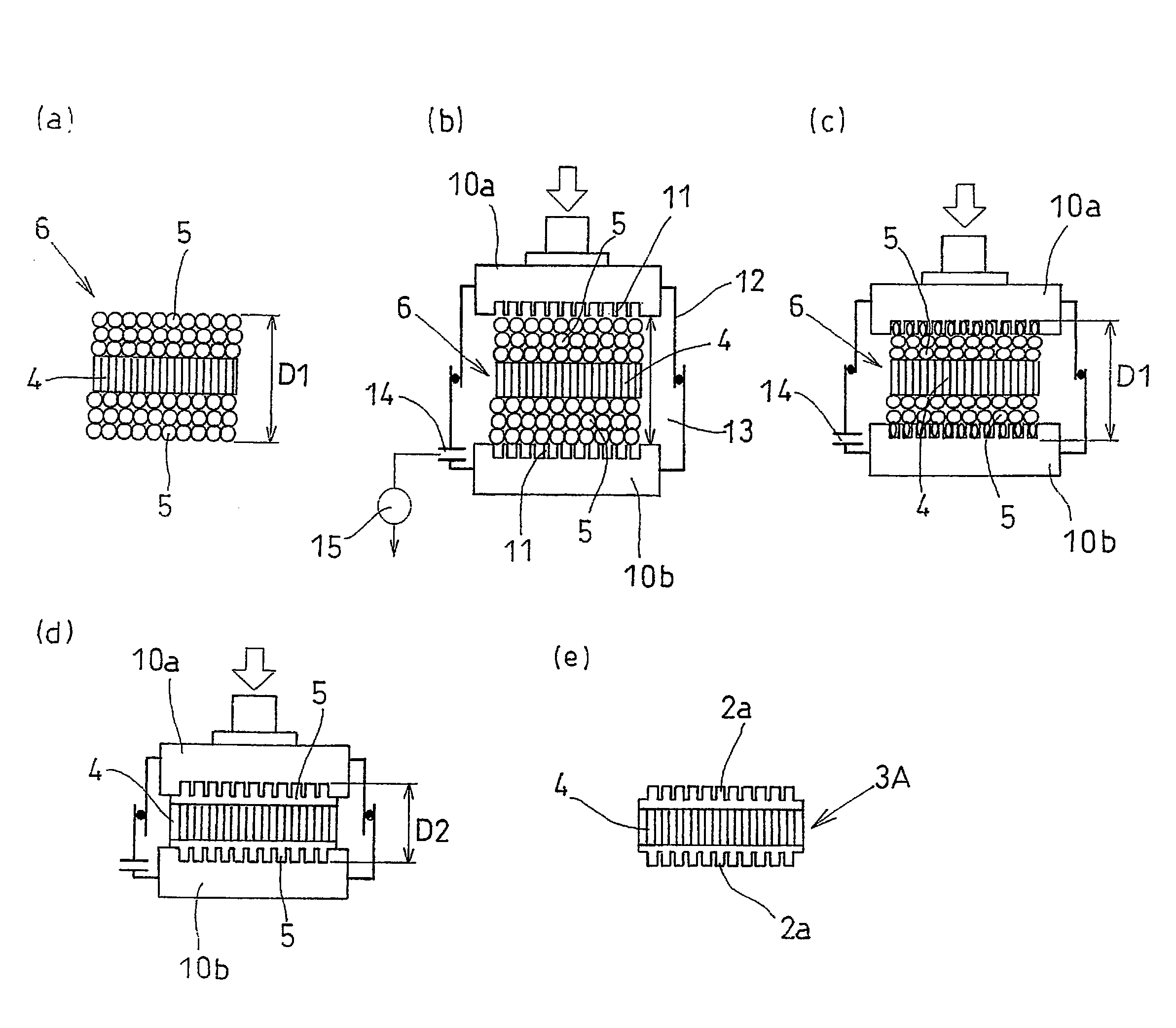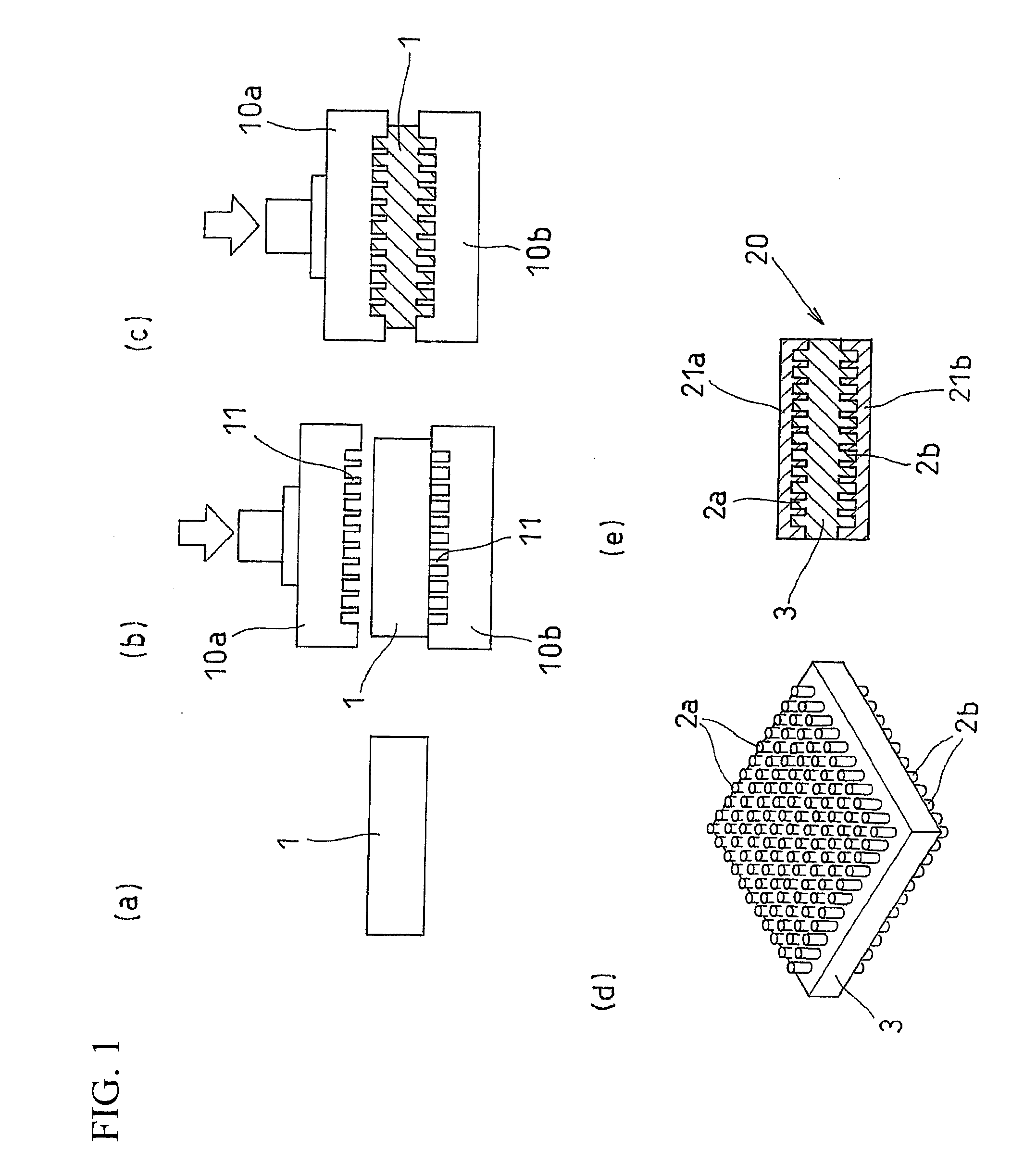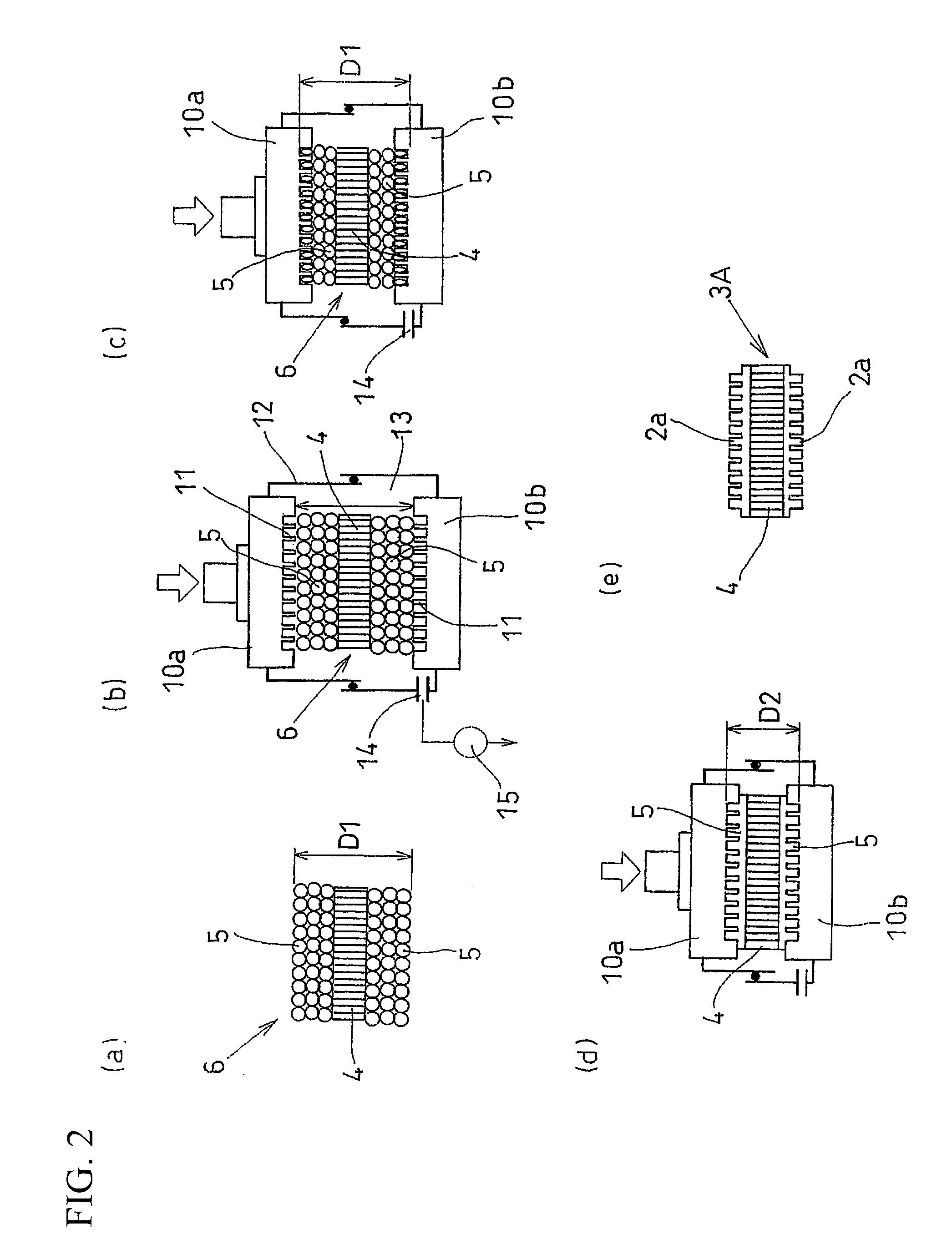Method for producing fuel cell electrolyte membrane and method for producing membrane-electrode assembly
a fuel cell electrolyte and electrolyte technology, applied in the direction of final product manufacturing, sustainable manufacturing/processing, electrochemical generators, etc., can solve the problems of reducing the power generation efficiency of the membrane-electrode assembly, the electrolyte membrane is likely to be damaged, etc., to achieve the effect of reducing the interface resistance between the electrolyte membrane surface and the electrode catalyst layer, increasing the effective contact area between the electrolyte membrane surface and the electrode catalys
- Summary
- Abstract
- Description
- Claims
- Application Information
AI Technical Summary
Benefits of technology
Problems solved by technology
Method used
Image
Examples
Embodiment Construction
[0031]Hereinafter, the present invention is described based on the embodiments thereof with reference to the drawings. FIGS. 1 and 2 show explanatory diagrams of the method for producing a fuel cell electrolyte membrane of the present invention. FIG. 3 is an explanatory diagram of one embodiment of the production of the membrane-electrode assembly of the present invention with the use of a prepared fuel cell electrolyte membrane.
[0032]In the embodiment shown in FIG. 1, a fluorine-based electrolyte membrane 1 (thickness: approximately 25 μm to 70 μm) is used as a starting material (FIG. 1a). The electrolyte membrane 1 is positioned between upper and lower heating plates 10a and 10b each having recesses and projections 11 on the surface thereof (FIG. 1b). The electrolyte membrane 1 is heated and pressed by lowering the heating plate 10a (FIG. 1c). The temperatures of heating plates 10a and 10b are preferably approximately 170° C. to 300° C.
[0033]The depth of a recess (or the height of...
PUM
| Property | Measurement | Unit |
|---|---|---|
| Pressure | aaaaa | aaaaa |
| Area | aaaaa | aaaaa |
| Ion exchange properties | aaaaa | aaaaa |
Abstract
Description
Claims
Application Information
 Login to View More
Login to View More - R&D
- Intellectual Property
- Life Sciences
- Materials
- Tech Scout
- Unparalleled Data Quality
- Higher Quality Content
- 60% Fewer Hallucinations
Browse by: Latest US Patents, China's latest patents, Technical Efficacy Thesaurus, Application Domain, Technology Topic, Popular Technical Reports.
© 2025 PatSnap. All rights reserved.Legal|Privacy policy|Modern Slavery Act Transparency Statement|Sitemap|About US| Contact US: help@patsnap.com



